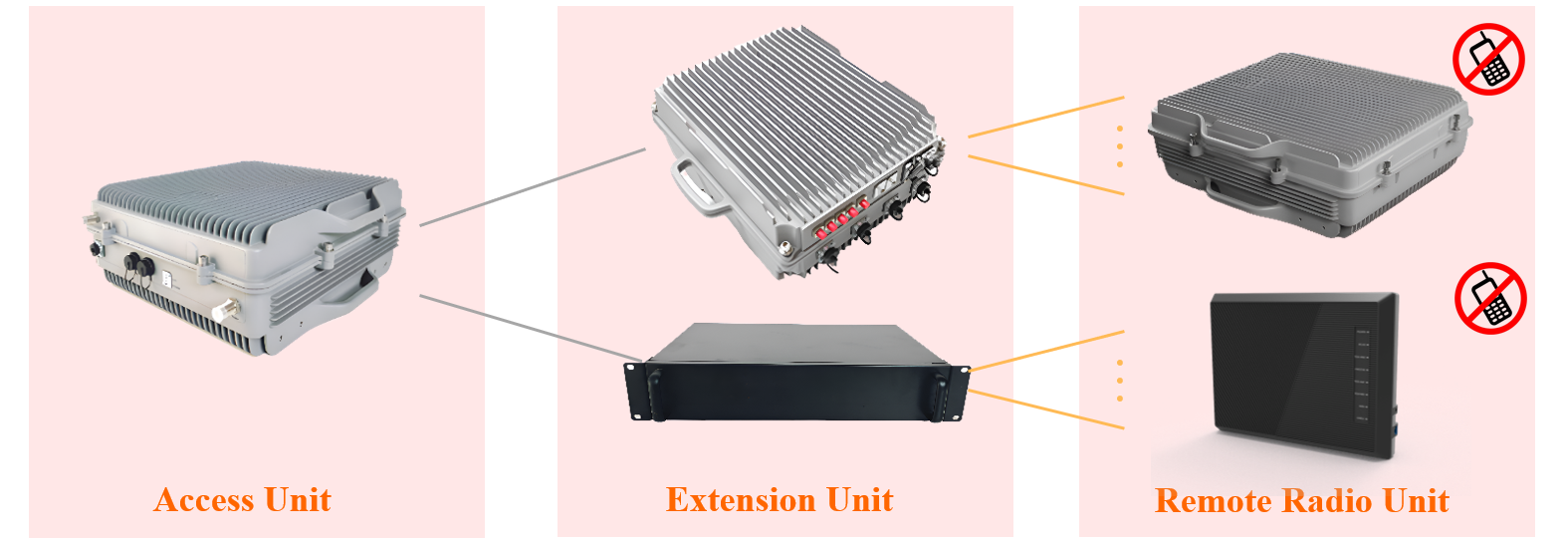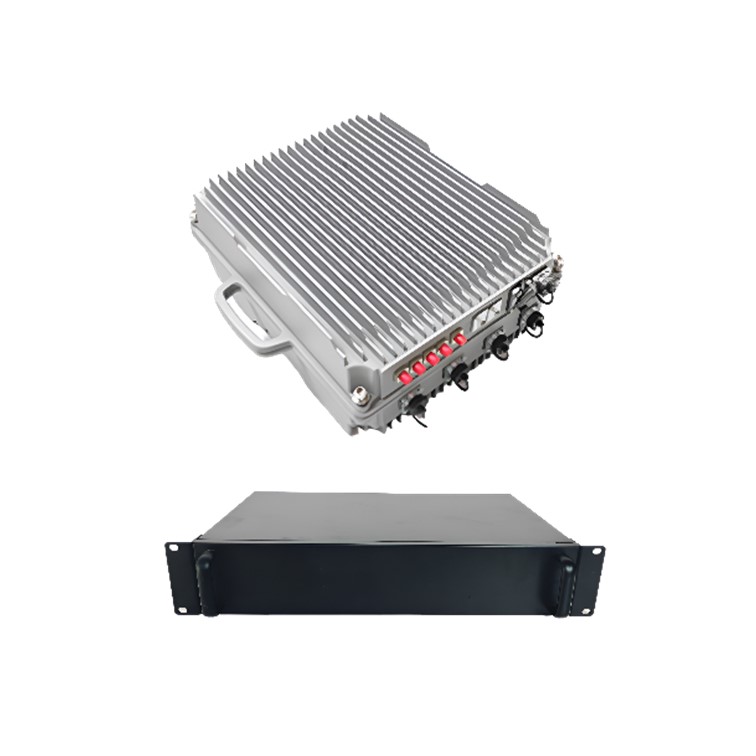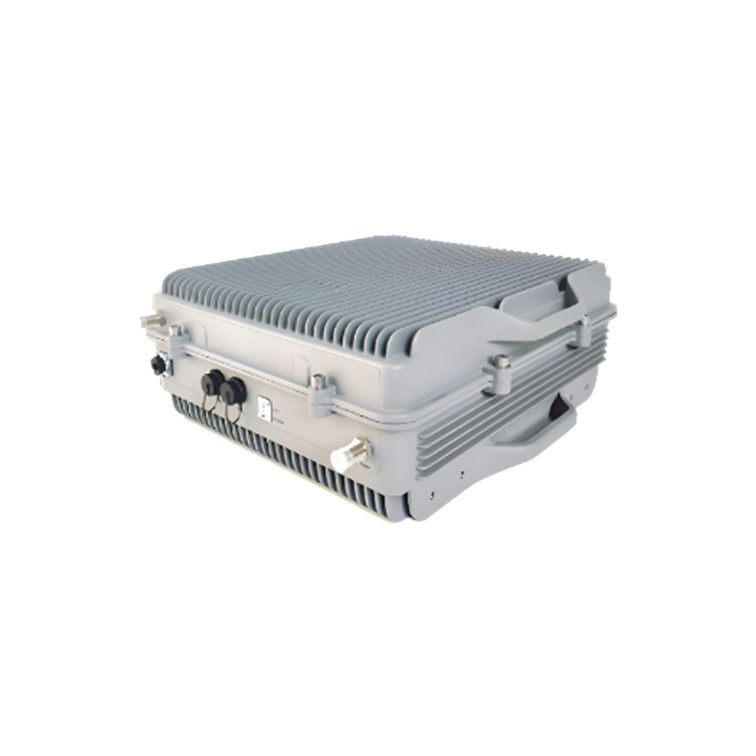Fiber Optic Cellular Signal Jammer
Product Description
Hocell fiber optic cellular signal jammer can disrupt mobile communication services, including voice, SMS and data, by jamming downlink signals of mobile phones. It supports jamming all frequency bands in 2G/3G/4G/5G and WIFI network modes.
The fiber optic cellular signal jammer comprises an access unit, multiple extension units, and remote radio units. The access unit detects cellular signals in the environment, analyzes their strength and frequencies, synchronizes TDD signals' uplink and downlink, and transmits processed signals to extension units. Each extension unit can connect multiple remote units, which then emit amplified jamming signals directed towards specific target areas. When integrated with an indoor distribution system, involving RF cabling, splitters, and indoor antennas, the fiber optic cellular signal jammer can precisely distribute jamming signals across multiple floors and rooms.
There are two types of fiber optic extension units, designed for indoor and outdoor deployment scenarios. Additionally, two variations of fiber optic remote radio units are available. The first is the distributed radio unit, requiring external antenna connections for jamming coverage. The second is the all-in-one radio unit equipped with built-in antennas.

Networking Architecture

Advantages
Scalable networking for different scenarios
The system's scalability allows for configuration adjustments in the number of extension units, remote radio units, and distributed antenna systems, enabling adaptation to various jamming areas.
Precise jamming
The system achieves precise jamming through distributed jammers and antennas, along with individual radio power adjustment for each channel.
Simplified cabling via fiber optic
Using fiber optic connections between extension units and remote radio units ensures easy scalability and reduces cabling complexity.
Centralized monitoring and management
All the equipment including access unit, extension units and remote radio units could be centrally monitored and managed through OMS.



